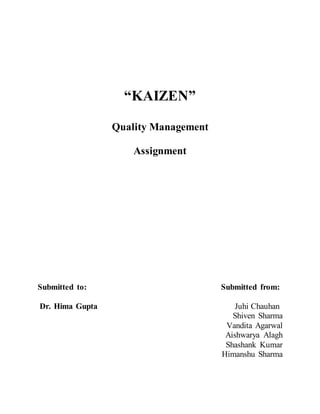Kaizen is a Japanese philosophy of continuous improvement involving small, incremental changes made on a regular basis. The key aspects of Kaizen are that it focuses on continuous, gradual improvement suggested by employees, rather than large, sudden changes imposed by management. There are typically four stages to a Kaizen event: analyzing current processes, identifying improvement opportunities, implementing process changes, and evaluating results. Successful implementation of Kaizen requires standardizing current processes, measuring key metrics, identifying areas for improvement, developing and testing changes, and standardizing new processes. Common goals for Kaizen events include reducing changeover times, improving workplace organization, developing one-piece flow, establishing pull systems, and enhancing equipment reliability.





